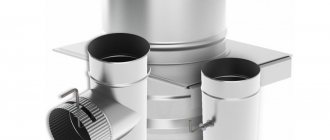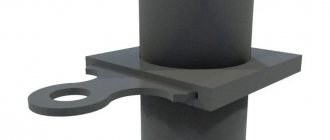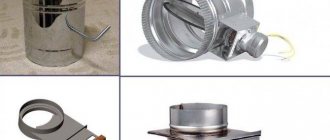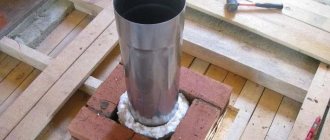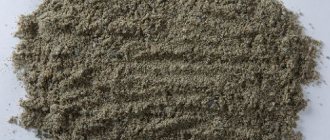Many owners of country cottages and summer cottages prefer to arrange the heating system themselves. Of course, to implement such an idea you need to have the appropriate skills and tools. But at the final stage of work, you can see an original fireplace or even a stove, which will fill any home with real warmth and comfort. The effective operation of such a system depends on which chimney damper is purchased.
The choice of gate must be approached carefully
What is it and what is it for?
Damper (from the German Schieber - damper) is a device for completely or partially blocking the movement of gases in the chimney. It has been used since the appearance of the first Russian stoves. Made from cast iron or steel. In modern engineering it has found application both in smoke exhaust structures and in ventilation systems.
Damper functions:
- Regulating draft and maintaining heat in the room.
The chimney is closed after use to prevent warm air from being drawn from the room into the chimney. Using a damper, you can reduce or increase the working cross-section of the chimney.
- Saving fuel consumption.
The valve can be used to regulate the intensity of oxygen flow to the flame, and accordingly increase or decrease the efficiency of the heater.
This statement is true only for furnaces and boilers without blowers and forced air supply devices.
Functionality
Since the damper is the main regulator of draft inside the house, the intensity of fuel combustion depends on it. To reduce the draft and intensity of the flame in the firebox, you just need to close the damper. To increase the fire, the opposite actions are carried out.
Modern damper models can be installed in both single-wall and double-wall boilers. If the fireplace or stove is not in use, then at this time the rotary damper valve for the chimney must be completely closed. Most often, craftsmen install a damper on the first meter of the chimney, since this area is not insulated. A different situation occurs with well-insulated pipes, since they should not have valves. The main danger is that when the internal and external metal expands, the gate may simply jam.
This device regulates traction
The main functionality of the damper includes:
- Partial blocking of the chimney duct.
- High-quality traction control.
- Control over the intensity of flame burning in the firebox.
How the gate works
Structurally, the gate is a locking device with an adjustable valve. It is thanks to the displacement of the valve that the movement of gases in the chimney is regulated. Can be installed in chimneys of round, square and rectangular cross-section. It is a metal plate that moves inside the smoke channel in a certain way.
Gate valves can be of two types:
- Retractable. Moves in one plane back and forth.
- Rotary. Regulates air access by rotating around its axis.
In addition, valves can be manual or equipped with an electric drive. The cost of the latter is an order of magnitude higher and they are not used in chimneys.
Is a valve needed in a sauna stove?
Definitely needed. Good draft in the bathhouse is the key to successful construction of the stove. According to experts, it all depends on the design of the sauna stove. If there is a chimney, then there is no doubt about the need for a damper.
The oven damper is used in all types of ovens. The principle of their operation is a little similar, so you shouldn’t bother. A gate is definitely needed. If combustion is only carried out thanks to the supply air, the valve is not installed. The gate will help you save on fuel, getting the most out of every run. The fuel will not be wasted.
Types and designs
The chimney damper is available in several versions.
Retractable
It is a round or rectangular frame with a plate. The plate extends and retracts, thereby adjusting the cross-section of the chimney.
This option is most often used with brick and ceramic channels. To ensure incomplete sealing and avoid carbon monoxide poisoning, a small hole is made in the plate. The main advantage of this option is ease of installation.
Rotary throttle
A rotary or throttle valve (also known as a hog valve) is a plate made of steel or cast iron that rotates around an axis. The axis is a metal rod welded inside the chimney. Used in steel chimneys.
It is less reliable - over time, the welding fastening of the plate and axle weakens. You should avoid installing a rotary damper in the bathhouse - even when closed, this type of damper partially allows steam to pass through.
In addition, gate valves differ in material (the most common are stainless steel and cast iron) and the method of adjustment.
Differences between retractable and rotary gates
The retractable damper allows you to adjust the working cross-section of the chimney, while the rotary damper only allows you to open or close the pipe. Of course, some tricks are possible - such as securing the hog in an intermediate position in different ways, but the factory equipment does not provide for this. In addition, the rotary gate complicates mechanical cleaning of the pipe.
The hog is often installed in metal chimneys, and the retractable one is installed in brick chimneys.
Home manufacturing technology
Qualified specialists always emphasize that even a novice craftsman can make a rotary and retractable gate. After all, in order for the finished product to perfectly cope with its main task, you need to correctly take all the necessary measurements. If the finished damper fits tightly into the chimney, then over time it may jam, as it will be exposed to high temperature. And when there is a large gap between the valve and the pipe, it will be difficult to regulate the intensity of the draft during operation.
Multifunctional butterfly valve
To make this type of gate, you need to use a steel angle of 30x30 mm, as well as durable sheet steel, the thickness of which is at least 1.5 millimeters. The manufacturing process itself consists of several main stages, which must be implemented in strict sequence:
- Initially, you need to take measurements of the inside of the chimney. This is done in order to avoid mistakes during the manufacture of a frame from a corner, which is fixed with a welding machine.
- On one side of the frame, exactly in the center, you need to drill a small hole (7-8 mm in diameter). It will be useful for the rotary axis.
- A similar hole must be made on the other side of the frame.
- The plate for the damper must be cut from a steel sheet. This part must fully correspond to the internal dimensions of the manufactured frame.
- To make a guide axis, you need to take a piece of wire with a diameter of 9 mm and a length that will exceed the size of the frame itself by 7 cm. You need to cut a thread on one side of the wire (a die is best for this task).
- The finished axle is carefully threaded into the holes on the frame and secured with a nut.
- All cuts on the plate are processed with a grinding machine and inserted into the frame.
- At this stage, the master must weld the axle exactly in the center of the plate.
- All that remains is to make a comfortable handle for the guide from high-quality scrap materials.
Experts always use one piece of advice that prevents the rotary axle from loosening: you need to insert small bushings cut from an ordinary metal pipe into the holes.
Universal device
Modern gate valves include the valve itself, as well as a special guide frame. That is why, before starting work, the master must measure the internal cross-section of the pipe or brick chimney. In accordance with the available measurements, a neat rectangle is cut out of sheet steel (5 mm thick). A small longitudinal fold is made on one side, the width of which should not exceed 30 mm.
These manipulations are necessary so that the finished damper can be conveniently pulled out. Each cut must be polished, due to which the dimensions of the product are reduced by 2 mm on each side. Such actions by the technician will ensure free movement of the damper inside the chimney.
When the damper is made for a brick fireplace, the frame itself can be made of thick steel wire, the diameter of which is within 6 mm. During this procedure, the metal blank is simply bent into the shape of the letter P in strict accordance with the existing measurements.
If the chimney has a rectangular shape and is made of steel, then it is better to make the frame from a metal strip 2 mm thick and up to 35 mm wide. The prepared strip is bent lengthwise, leaving a neat gap along the thickness of the plate. Only after this can small cuts be made in two places at an angle of 45° to give the workpiece a U-shape. All gaps in the places of cuts must be butt welded.
To connect the ends of a homemade damper, you need to use two pieces of metal, which should be positioned in such a way that the damper blade can pass freely between them. At the end of all these manipulations, the master should come out with a rectangular frame with grooves for the shutter.
To make a valve in a round pipe, you need to take two identical metal sheets 2 mm thick. Round holes are cut in the center in accordance with the diameter of the chimney. The valve plate must be manufactured separately. After this, the sheets are connected to each other using a welding machine.
It is necessary to weld only three sides around the perimeter so that the holes of the finished valve on the pipe match exactly. A gap of 5 mm must be left between the top and bottom sheets. At this point, the damper manufacturing process can be considered complete, since the craftsman can only insert the valve and secure the finished product to the chimney.
Advantages and disadvantages
Like any engineering solution, a gate has a number of advantages and disadvantages.
Pros:
- Possibility of traction control;
- Fuel economy;
- Dampers help retain heat.
Minuses:
- The devices make it difficult to clean chimneys;
- If installed incorrectly, the gate may jam and negatively affect the movement of gases;
- To make the correct adjustment, you must have some knowledge in the field of smoke exhaust systems.
Purpose and characteristics
This device allows you to control and regulate the draft into the smoke exhaust system. Translated from German,
gate (“schieber”)
gate (“schieber”) means a part that is made of a certain metal.
Good traction is one of the key conditions for normal operation of the fuel system. With good draft, the fuel burns almost completely, providing an efficient and economical heating process. If the draft is poor, then smoke in the room and a fire may occur.
To eliminate these dangerous and unpleasant moments, a slide damper is installed in the smoke exhaust system. It prevents the fission of gas bubbles that should not be separated.
It is recommended to install a slide damper when heating with gas, coal, or solid fuel.
Make it yourself or order it
The choice between a homemade or a ready-made damper should be based on the type of chimney and the degree of its readiness. So, you can install a self-made retractable structure into a ceramic or brick channel.
If we are talking about a stainless chimney that is in the process of assembly, in this case it is better to choose a finished product. The damper is usually included in the chimney system and is mounted using pipe-to-pipe technology, which I will talk about later.
In addition, it is not always possible in the store to select a product specifically for your chimney shape.
Visual demonstration of the efficiency of a gate valve (video)
Closed gate:
Open gate:
In most cases, the gate is made of stainless steel with a thickness of no more than 1 mm. This part can withstand temperatures up to 9000C, is resistant to corrosion and has a low coefficient of thermal expansion.
In order to ensure maximum ease of operation of the chimney and good soot removal, the surface of the damper must be polished.
The joints are joined using the rolling method.
A standard damper covers up to 85% of the chimney, which is the optimal indicator for the effective removal of combustion products.
Making and installing a gate valve with your own hands
Required materials and tools
To independently manufacture and install any type of stainless steel gate, we will need the following tools:
- Bulgarian;
- Abrasive wheels - cutting and grinding;
- Drill;
- Tap and thread lubricant;
- Hammer;
- Pliers;
- Vise;
- Welding and electrodes;
- Kern;
- Roulette;
- Compass;
- Marker.
And materials:
- Stainless steel sheet (preferably domestic brand 12×18n10t, or imported AISI304, they are more expensive, but last an order of magnitude longer).
Sheet thickness 1.5-2.5mm;
- Stainless steel tube 6mm;
- Bolts 8mm -2 pcs;
- Metal rod for the frame.
Drawing and diagrams
Before manufacturing, it is necessary to draw a drawing or diagram of the future valve.
I will give some example diagrams below:
Size calculation
You need to take measurements very carefully; a gap of even a few millimeters can cause the chimney to malfunction.
Actions step by step:
- Using a tape measure, measure the dimensions of the internal section of the channel;
- Add 20-30 mm to the obtained result - you get the outer size of the frame;
- Do not forget to make an opening in the finished valve to release gas;
- The position of the welding holes should be accurately marked.
We summarize the dimensions for the rotary gate in the table:
Required tools and materials
In order for the finished damper to meet all the requirements, the master must prepare certain devices. The main percentage of tools can be found in every home, but everything missing can be purchased at a specialized store. To work you will need:
- Roulette.
- Drill.
- Permanent marker.
- Grinder, as well as a grinding and cutting wheel.
- Kern.
- Vise.
- Stationery compass.
- Welding machine.
- Special tap.
- Pliers.
- High-quality oil for lubricating the tap when cutting threads.
- Electrodes that are designed for stainless steel.
- Hammer.
- Kern.
- Vise.
As for materials, in this case you need to prepare:
- A stainless steel pipe with an internal cross-sectional diameter of 6 mm.
- Two 8mm bolts.
- Stainless steel sheet with a thickness of 1.5 to 2 mm.
- Metal rod or nail.
Only after all of the above tools and materials have been prepared can you safely begin creating the plug.
Installation features
- When installing the gate at the stage of laying brickwork, the frame is placed at a height of 6-8 rows from the base of the pipe;
- The frame should stand straight, without blocking the outline of the chimney;
- In stainless steel chimneys, the valve is installed using the “pipe-to-pipe” technology. It is necessary to coordinate its dimensions with the diameter of the channel;
- An important nuance - the damper is installed on an uninsulated section of the chimney;
- The height from the firebox to the damper should not exceed 1 m (for metal channels);
- Pipe height from the floor to the valve - 1.8 - maximum 2 m (for brick);
- The damper in the grooves should move freely;
Basic Installation Recommendations
If the chimney is made of brick, then it is better to install the damper at a distance of one meter from the surface of the stove. This detail is installed at the stage of laying the fireplace itself. Only in this case can the damper frame be properly embedded. A small part of the gate assembly must remain outside. To prevent the novice technician from making mistakes, experts divided the installation process into several main stages:
- You need to start with laying the chimney (the first 7-9 rows).
- At this stage, the top layer of brick is covered with a small amount of mortar.
- Now you can safely place a pre-prepared frame, which should stand as straight as possible so as not to block the chimney.
- A layer of working mortar is applied to the installed product, and the masonry itself continues according to the existing scheme.
At the final stage, all that remains is to seal all existing cracks so as not to disturb the traction force and prevent carbon monoxide from entering the room.
Frequent errors and problems during installation
- Installation of a valve in an insulated area. Under the influence of thermal expansion, the damper may jam;
- Installation of a cast iron part in a metal chimney (cast iron weighs a lot);
- Using too thin steel or stainless steel with a low nickel content for the manufacture of valves. Such a product quickly deforms under the influence of hot gases and can burn out;
- Installation of a gate with a non-smooth surface;
- Installation of a valve without a hole for carbon monoxide release;
- Installation of handles that do not allow monitoring the position of the valve (applies to rotary elements).
Which material is stronger
In addition to structural differences, types of gate valves may differ in the material of manufacture. The only possible option is metal, since it is the only one that does not burn or deform at high temperatures, and over time, even in an aggressive environment, does not change its characteristics.
For production, either cast iron or stainless steel is used. It is not possible to build a damper from cast iron yourself, since this requires, at a minimum, a forge. However, you can find both nondescript and beautifully designed cast iron dampers on sale.
Cast iron rotary gate with a comfortable handle. This design is suitable for a brick chimney with a rectangular cross-section, capable of supporting the fairly heavy weight of the device
Steel products look simpler, but their characteristics are similar to their cast iron counterparts. The advantage of steel fixtures is their light weight.
If a cast iron damper for a stove chimney is installed only on a durable, permanent structure, then a steel damper is suitable for any smoke exhaust ducts - brick and steel, rectangular and round, solid and light.
Samples of a galvanized steel damper, chimney cross-sectional diameter – 150 mm. Galvanization, unlike ordinary steel, does not react to moisture (condensation) and does not corrode
When choosing a material, you need to focus on the characteristics of the chimney pipe and the features of the interior.
For a country heating stove, a modest steel valve is sufficient, while for upgrading a Russian stove in a cottage, a custom-made cast iron valve is better suited.
Features of gate maintenance
The gate, made of stainless steel, is usually polished to perfect smoothness. Soot settles on it poorly, but still settles. Therefore, it must be cleaned periodically.
The horizontal valve can be cleaned simply by pulling it out to the maximum and applying a special solution. Rotary - cleaned through the chimney with a special plastic brush. You should also ensure that the damper moves freely along the guides. It is allowed to periodically lubricate them with an anti-corrosion compound.
Creating a rotary gate
First, let's find out how to make the most complex version of the gate. Detailed instructions will help you get the job done quickly. We will learn how to make a valve when the stove heating has already been done, however, a gate was not provided for in it.
To make a gate, you will need the following tools:
- electric drill;
- grinder with a circle for metal;
- a tap that is needed for cutting internal threads in a hole;
- oil that needs to be used to lubricate the tap when forming the thread;
- hammer;
- welding machine and electrodes for working with stainless steel;
- vice;
- pliers;
- compass and tape measure;
- core;
- permanent marker.
The list of materials for creating a gate valve is as follows:
- stainless steel sheet, the thickness of which is from 1.5 to 2 mm;
- stainless steel tube with an internal diameter of 6 mm;
- 2 bolts, 8 mm in diameter;
- a weaving nail or a metal rod.
If you have everything you need, you can start working on creating a gate:
- First you need to measure the internal diameter of the chimney pipe. Write down these indicators. After that, a circle of the same diameter is marked on a stainless steel sheet, only 1–2 mm smaller, so that the plate can rotate freely.
- After this, the intended circle is cut out with a grinder. You need to do everything carefully so that the edges are even.
- The cut valve should fit perfectly into the chimney. To do this you need to try it on. If necessary, the plate is protected, ground and brought to the required size.
- Now you need to take a stainless steel tube prepared in advance (6 mm in diameter) and attach it to the cut out circle. It is measured with a marker according to the size of the valve. On each side it is made 3 mm smaller than the internal diameter.
- The tube is cut using a grinder. The internal hole is drilled out for threading. When drilling, it is necessary to periodically lubricate the surface of the tube inside with machine oil.
- An 8 mm thread is cut on both sides of the tube using a tap. During operation, the tool is constantly lubricated. To remove the cutting chips, after each half turn along the thread, you need to make a half turn back so that the chips come out.
- Next, three small holes are made in the valve. Make three marks in advance using a marker.
- The tube and valve are clamped in the clamp, after which it is welded to the plate through these holes. Welding begins from the central hole of the future gate valve, then one clamp is released and welded into the remaining hole.
- Two holes are marked on the chimney pipe. They must match on both sides so that the tube can pass through them freely. To do this correctly, you need to wrap the pipe with a tape measure and measure the center vertically and horizontally. All that remains is to drill these holes.
- The valve is assembled in a tube.
- Now we need to make a template for the clamp of our gate valve.
- The markings are transferred to a stainless steel sheet. A compass is used for this purpose.
- The middle for the holes of the retainer is marked, everything is cut out and drilled according to the markings.
- All that remains is to weld the finished clamp to the pipe.
That's all, the chimney damper is ready. Although this option is more complicated, with visual instructions and suitable photos everything becomes easier.
Expert advice
Where to install the damper on the chimney
There are 3 options for placing the damper relative to the chimney:
- Placement in the firebox of a fireplace or stove;
- Fastening according to the “pipe to pipe” principle;
- Installation in a ventilation pipe.
Let's consider the first 2 options:
- By placing the valve in the furnace firebox or in the outlet pipe
In this case, the damper is located at a height of no more than 1 m from the firebox, on an uninsulated section of the pipe. This location is convenient for adjusting the damper.
- Pipe in pipe
Applicable for metal chimneys. This installation option does not require additional fasteners. When purchasing a ready-made system, you should install the valve strictly according to the manufacturer’s instructions.
How to adjust traction
Adjusting the draft using a slider is quite simple. By changing the position towards increasing the gap, we increase the flow of air to the fire and the flame flares up stronger. Reduce the gap - traction decreases. The valve is closed after the flame has completely died out - this way the oven cools down much faster.
The latest boiler models are made with built-in automatic baffles. All other heating units require the mandatory installation of a damper.
Tips for choosing a gate valve
It must be remembered that the correct selection of an element such as a slide damper is reflected in the future not only on the draft indicator, but also on the safety of the heating system, of which the chimney is a part. Installation of the damper is carried out on any model of fireplaces and stoves, except for the most modern ones, which have a deflector.
The main recommendations for choosing slide valves for smoke exhaust communications are as follows:
- If the heating device operates by processing gas, it is better to purchase a rotary valve model. This is due to the fact that such models exclude the possibility of completely blocking the smoke exhaust channel. Thus, the heating system will be safer. The chimney, which removes combustion products from the gas stove, must be closed by at least 40 percent during operation;
- There are heating systems that operate intermittently (periodic). A closed damper installed in such a heating structure, as a rule, allows steam to pass during supply, and an open damper contributes to the formation of a large amount of soot on the pipe, which is located below the plate;
- It is strictly not recommended to use rotating elements for installation in sauna chimneys.
A rotating device is the most suitable option for a gas-consuming system
Note! The chimney damper is a shaped part of the chimney service, so if you purchase everything necessary for laying a chimney, it will be included with the pipes. Such shutters can be purchased at any specialized store or ordered using an online store on the Internet.
Experts recommend carefully measuring the cross-section of the smoke exhaust duct before purchasing a gate product. Perhaps this is the main thing that needs to be done before purchasing a gate.
Why do you need a chimney damper - what is a damper, types, installation rules
A damper is a damper, a valve for a stove chimney, designed to improve draft in it. This part is made of metal. It is installed at the stage of construction of the chimney pipe and ventilation passage.
Draft is of great importance for the functioning of the heating unit. When it is strong enough, the fuel burns completely, resulting in reduced costs. When the draft is poor, a fire can occur at any moment, and to prevent this, install a damper for the stove or fireplace.
You can install a damper for a fireplace or heating unit in one of three ways:
- The damper is installed directly in the fireplace insert. It is placed at a distance of 100 centimeters from the heating device, which makes it easy to control.
- Combining the damper with other elements of the heating structure without the use of additional fasteners. This installation method is called “pipe to pipe”.
- The damper is installed in ventilation pipes. It is used to prevent the fan motor from overheating during operation.
Since there are a variety of models of stove units and fireplaces and heating using them is carried out in different ways, each of them requires its own type of valve.
For example, for a stove operating on gas, you will need a classic rotary-type throttle valve or a rotary automatic damper, since they are capable of blocking the chimney pipe completely and then the flame will not be able to escape outside.
At the same time, rotary valves should not be installed when installing a sauna stove, since when closed they will allow steam to pass through, and in the open position they are very difficult to clean.
As a rule, a damper for a fireplace or stove unit is sold as a complete set along with a chimney. But there are smoke exhaust structures without a damper, so you can make one yourself by buying elements for it at a hardware store. The main thing to do before purchasing them is to decide on the required sizes.
t one row of bricks. The gate plays one of the main roles in the chimney, the purpose of which is to regulate draft. Good draft means that the efficiency of the entire heating system will be excellent and fuel savings will be obvious.
Before making the design and installing it yourself, consult a specialist who will calculate the draft level of your stove. For this, professionals use a special formula. Take care of yourself!
Classification
Modern industry produces many types of gate valves for ventilation, which differ from each other in many parameters. Gate designs vary:
- in shape - round and rectangular;
- according to its design, the gate can be retractable or rotary;
- by type of control - manual, automatic (electric drive), pneumatic, hydraulic;
- according to the installation method - using flanges or using the method of installation in a socket;
- according to the material of manufacture - anti-corrosion, alloyed or chrome-plated steel.
The external shape of the damper depends on the structure of the ventilation system in which it will be installed. However, in private situations, only rectangular gates can be installed. There are two such cases.
Round
As already mentioned, the shape of the damper used depends on the form of ventilation. Accordingly, the use of a round damper for an air duct is only possible if its shape matches the system pipes.
Rectangular
A rectangular valve for ventilation is used much more often than round valves. In addition to pipes, it can also be installed in chimneys, drains, wastewater systems, etc.
Moreover, in some situations, only a rectangular damper can be used for ventilation. There are two such cases.
- If there is a need to hide the valve, subject to a minimum amount of free space.
- During the installation of ventilation systems, the design of which involves the use of electric heaters.
Gate for ventilation system
Dampers designed for ventilation consist of a damper in a metal pocket. These structures are used to block a section of the air duct from the network.
The standard damper for ventilation has a nipple connection. The longitudinal size of the product up to the nipple grooves can vary from 70 to 200 mm. If the installation is carried out on round air ducts of impressive diameters, then guide angles are additionally used, which ensure good movement of the damper. Round gate valves can be based on stainless, galvanized or black steel. The thickness does not exceed 1 mm.
Purpose and operating features
The main function of the damper is to effectively regulate the draft in the chimney. During warm weather and on a windless day, the draft may not be enough, in which case the gate must be opened slightly. If there is excess draft, it is closed. That is, this element is used to increase and decrease air flow.
A damper installed in the chimney allows you to retain heat in the fireplace or stove. If the firewood in the firebox is sufficiently burnt, it can be covered. Then the warm air will not fly out through the pipe, but will go directly into the room. Otherwise, the stove will cool down much faster, which is undesirable for a sauna.

